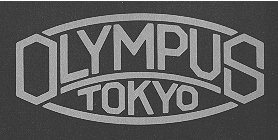
| home |

 |
Although Maitani loved photography so much, he had no intention of making it as his career. It was just a hobby that he enjoyed so much. He doubted he could make a living through photography as it was a difficult and demanding work. Although his interest was theoretical physics, he entered the Mechanical Engineering Faculty of Waseda University and specialized in automobile engines. In his university years, he spent all his time taking photographs and wondering about his future. The Leica IIIf that Maitani used was only good for a certain range of photography, it was not a good all-round camera. When Maitani found a type of subject that he couldn't shoot with his camera, he started to search for another camera that he could use. If he couldn't find one, the only solution was to build one himself. This was the root of his career in camera design. In his fourth year in the University, Maitani made an agreement to join a car company. Later, Eiichi Sakurai, a noted camera designer and Director and Head of the Camera Development Division of Olympus, happened to discover a camera patent that Maitani filed, and personally invited him to join Olympus. In the spring of 1956, Maitani joined Olympus Optical Co. Ltd.. Eiichi
Sakurai was born in Japan in 1909. He graduated from Tokyo University
Technology Department with a mechanical engineering degree, and after
joining Olympus Optical Co. Ltd., as a member of the project team, developed
their first camera. In 1974 he retired as senior executive director. He is also
famous as an amateur photographer and his photographs express the nostalgic
impression of his youth. He has held a successful exhibition at The
Art Institute of Chicago. |

|
|
I: Surely, you needed to recruit all kinds of talented persons, didn't you? (Mr. Maitani left his seat.) S: Yes, we recruited them steadily. I: Mr. Maitani entered by a technical thesis or something? S: No. He took out a patent for a rangefinder device. And then he visited me to show that. I was writing articles about problems of film surface for the magazine "Syasin Kogyo". I guessed he thought his invention could be fairly evaluated by me. But I remembered that I gave an advice that bellows camera would be out of date, and he should think out something new. And then I told Naito about the matter and to recruit him. Maitani was a Waseda University student. I: You entered Olympus in the same way? S: Yes, Mr. Naito is one of the older member of the Waseda University's alumnus association. (Mr. Maitani came back to his seat.) M: You talked about me while I was away, didn't you? I: There're things that are hard to tell if you were here(laughs). M: Yes, that's true. I: Well then, you were invited by Mr. Naito? S: No, I directly invited Maitani. I told him to join at the first time we met. I: Did you often take pictures at that time? M: Yes, I was quite familiar with photography. And Mr. Sakurai was the only person who knew photography among the staff members of Development Section. And I was familiar not only with photography but also mechanisms of camera ever since I was a student. So many colleagues asked me "How is that of Leica camera?" or "How about this point of Contax camera?".... Answering the questions was my only job since I couldn't make a drawing well. They let me play. But I was given an assignment. The first order was "to develop a 6,000Yen camera". |
| chrono
| young Maitani | joining
Olympus | philosophy | anecdotes
l Maitani adv | Pen
|
OM | XA | photo
|